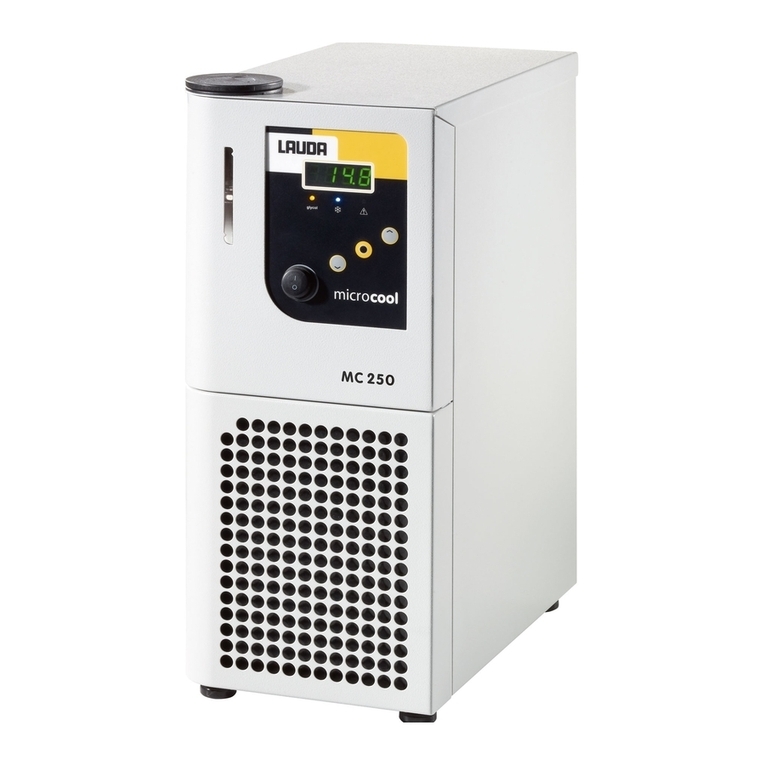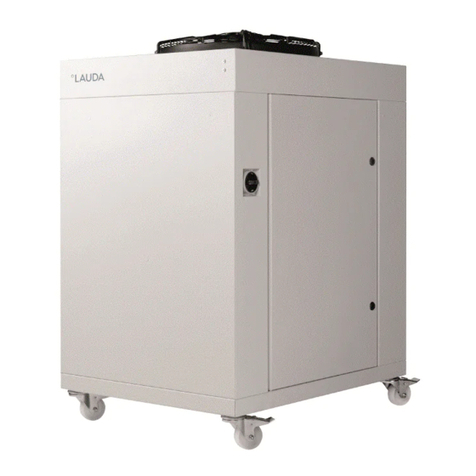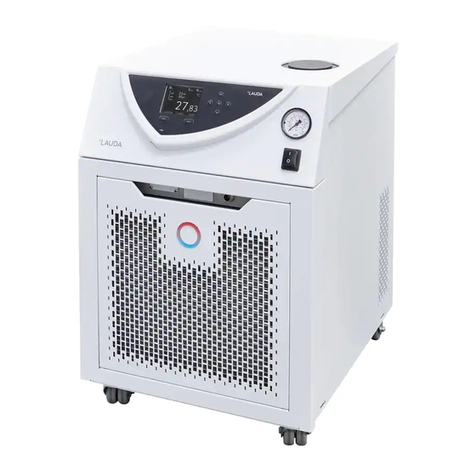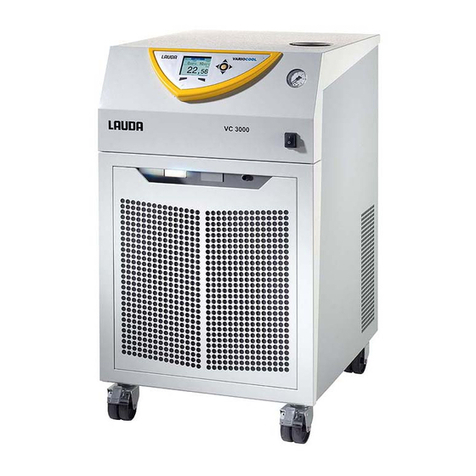
5.4 Setting the pump pressure......................................................................................................................................... 29
6 Operation.............................................................................................................................................................................. 31
6.1 Switching on the device............................................................................................................................................... 31
6.2 Basic display and menu items..................................................................................................................................... 31
6.3 Indications in the display............................................................................................................................................ 33
6.4 Setting the temperature set point............................................................................................................................ 33
6.5 Restricting the temperature limits............................................................................................................................ 34
6.6 Configuring the clock timer....................................................................................................................................... 34
6.7 RS 232 interface......................................................................................................................................................... 37
6.7.1 Configuring the RS 232 interface......................................................................................................... 37
6.7.2 Protocol..................................................................................................................................................... 37
6.7.3 Cable test and interface test of RS 232............................................................................................... 38
6.7.4 Write commands...................................................................................................................................... 39
6.7.5 Read commands....................................................................................................................................... 39
6.7.6 Error messages........................................................................................................................................ 40
6.8 Alarm output............................................................................................................................................................... 40
6.8.1 Configuring the alarm output................................................................................................................ 40
6.8.2 Interface potential-free contact............................................................................................................. 41
6.9 Enter the oset for the temperature probe............................................................................................................ 42
6.10 Restore factory setting............................................................................................................................................... 42
7 Maintenance....................................................................................................................................................................... 44
7.1 General safety instructions........................................................................................................................................ 44
7.2 Maintenance intervals................................................................................................................................................ 44
7.3 Cleaning the device.................................................................................................................................................... 45
7.4 Cleaning the air-cooled condenser.......................................................................................................................... 45
7.5 Check the heat transfer liquid................................................................................................................................... 45
8 Faults.................................................................................................................................................................................... 46
8.1 Alarms, errors and warnings....................................................................................................................................... 46
8.2 Overview of alarms..................................................................................................................................................... 47
8.3 Overview of warnings.................................................................................................................................................. 47
9 Decommissioning................................................................................................................................................................ 48
9.1 Draining the device..................................................................................................................................................... 48
10 Disposal................................................................................................................................................................................ 49
10.1 Disposing of refrigerant............................................................................................................................................. 49
10.2 Device disposal............................................................................................................................................................ 49
10.3 Disposing of packaging............................................................................................................................................... 49
11 Technical data...................................................................................................................................................................... 50
11.1 General data................................................................................................................................................................ 50
11.2 Cooling unit.................................................................................................................................................................. 51
V07
Microcool4 / 57


































